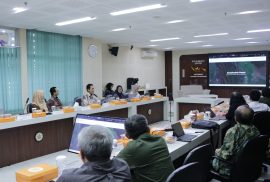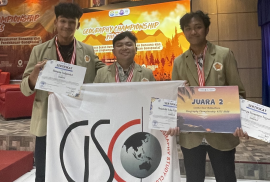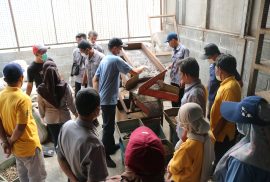Upaya menghadapi isu perubahan iklim membuka peluang karier baru bagi lulusan Geografi. Hal tersebut menjadi bahasan utama dalam pembekalan calon wisudawan Fakultas Geografi Universitas Gadjah Mada (UGM) Periode I Tahun Akademik 2025/2026 yang digelar di Auditorium Merapi, Senin (24/11/2025). Dalam kegiatan tersebut, alumni Geografi UGM, Fabia Hulwa Shelfia Putri, S.Si., membagikan pengalaman sekaligus memaparkan strategi berkarier di organisasi non-pemerintah (NGO) kepada 140 calon wisudawan.
Dr. Erlis Saputra, S.Si., M.Si., Wakil Dekan Bidang Pendidikan, Pengajaran, dan Kemahasiswaan, menyampaikan bahwa geografi merupakan disiplin ilmu yang sangat relevan dalam menjawab isu global, termasuk perubahan iklim. Karena itu, kegiatan pembekalan ini ditujukan agar para wisudawan tidak hanya siap memasuki dunia kerja, tetapi juga mampu menjadi bagian dari solusi. “Kita akan melihat peluang kerja di sektor NGO sesuai tema hari ini, agar ada gambaran apa saja yang perlu dipersiapkan,” ujarnya.












